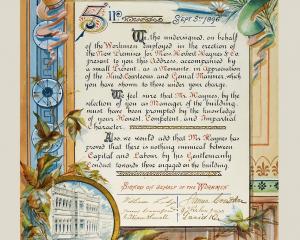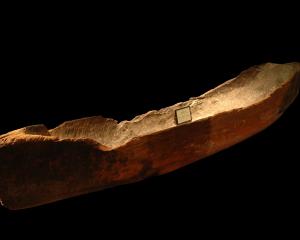
Manila folders, believed to date back to the 1800s, were invented for the safe storage of official documents. Originally derived from manila hemp or abaca in the Philippines, the toughened plant-based fibre served as a protective layer for the important papers contained within. Today's manila folders are much lighter than their predecessors. No longer plantain-based, they are made instead from semi-bleached wood pulp, and most commonly available in buff or beige.
Nick Austin's Lettuce Poems (2012) is an ode to filing. In this painting, Austin proposes a somewhat eccentric classification system, whereby handwritten titles ''Little gem'', ''Matchless'', ''Grandpa Admires'' and ''Winter Density'', differentiate between lettuce (and poem?) varieties. With only the edges of the leaves exposed, the contents within the manila folders are hidden from view.
Ambiguity and word play commonly feature in Austin's paintings, as he draws relationships between subjects that might not otherwise be associated. Borrowing from the logic of puns, jokes and concrete poetry, his work is at once literal and metaphysical.
Created during his tenure as the 2012 Frances Hodgkins Fellow, Austin's culminating exhibition ''The Liquid Dossier'' contemplated the Hocken's function as a repository of papers and pictures, and the institutional structures of the library, archive and gallery. His exhibition catalogue took the form of a manila paper document wallet, containing: a postcard, DVD, single Gregg's instant coffee sachet, small envelope with three photographs, a folded poster essay and a work of fiction.
By contrast, the files within Lettuce Poems' four manila folders are unknowable, glimpsed only as slivers of economically painted white paper tabs. We cannot know what is inside as the folders are painted shut, rendered physically inaccessible by the artist.
Austin has similarly painted a repeated series of identical cardboard boxes with invisible contents as the subject of the paintings themselves. This series followed some 15 years after an internship in the archives department at the Andy Warhol Museum, in Pittsburgh, where Austin first witnessed Warhol's prolific Time Capsules. In 1974, Warhol began assembling more than 600 boxes, filled with everyday possessions, later to be exhumed, catalogued and exhibited as curiosities. What appealed to Austin most about the Time Capsules was not the actual but the imagined contents.
Hocken Collections, Uare Taoka o Hakena, has more than 10,000 shelves of archives amounting to more than 10km of files and folders. As an artefact, the manila folder presents an analogue system that today risks being made redundant due to the proliferation of digital shared drives and the promise of a future paper-free office.
Lettuce Poems is showing as part of ''The Order of Things'', an exhibition that considers systems of categorisation, taxonomy and the production of knowledge.
-Andrea Bell is curator art at Hocken Collections, Uare Taoka o Hakena, University of Otago












